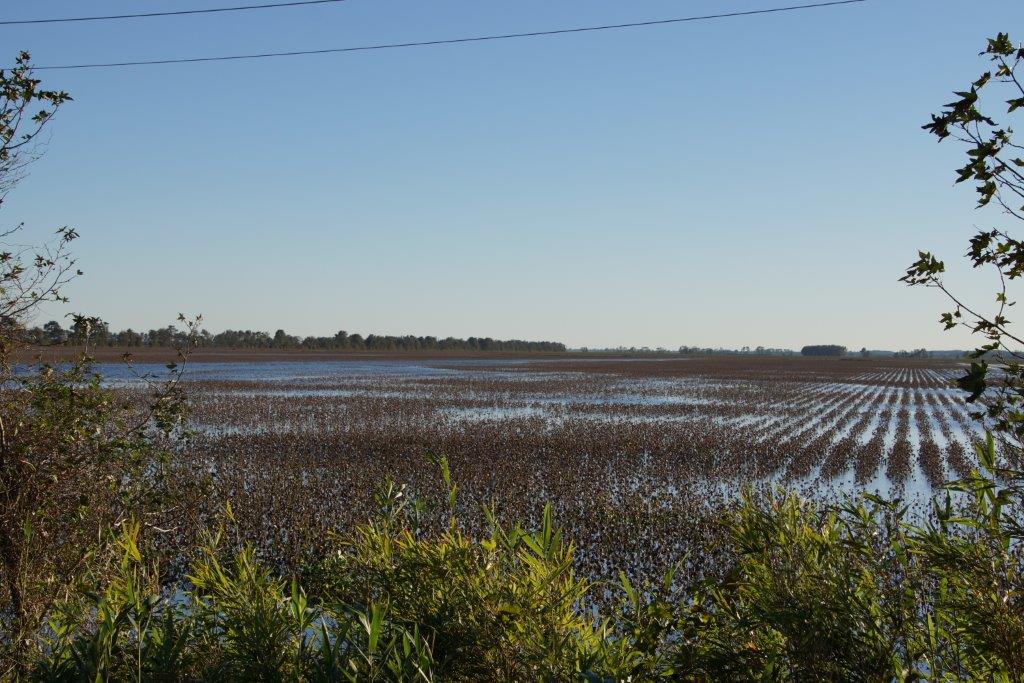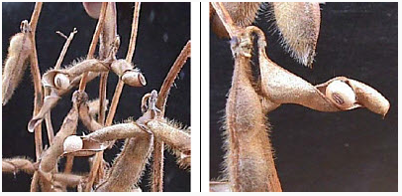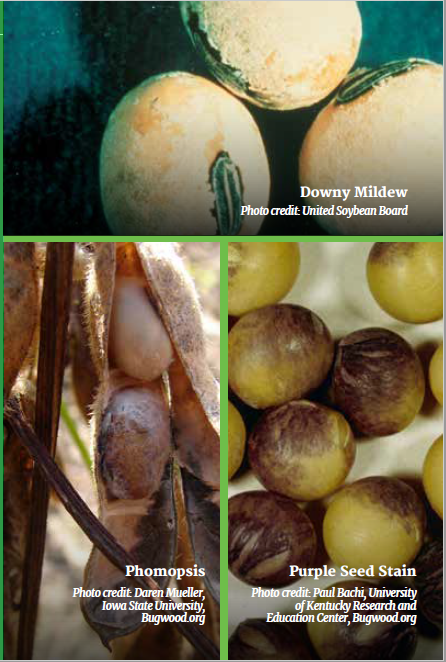As flood waters recede across eastern North Carolina, disaster assessment begins. For soybean farmers one of the first things is to attempt to estimate crop damage. Unfortunately, this can be a difficult task. The extent of damage is dependent on a number of factors including plant growth stage, depth of flood waters, days of flooding, and weather conditions after the flooding.

Types of Damage
Floods waters can have significant damage on both immature and mature crops. Soybeans that were submerged in flood waters from creeks, rivers and streams are considered to be adulterated according to the Food & Drug Administration and should not enter commerce. Federal crop insurance provides that submerged soybeans be appraised at zero value. This is due to the potential for toxins in the floodwaters. Check with your insurance adjuster to confirm.
Immature Crops
Yield Losses – In fields that had not yet reached maturity, damage to the plants could limit or stop seed development. The good news is Dr. Dunphy estimates it takes three to four days underwater for plants to not recover. Fields where the water receded quickly are therefore in better shape. If plants at the R6 stage (full seed stage, approximately a month from maturity) are underwater for more than four days a significant yield loss would be expected.
Mature Crops
Shattering – Once soybeans have reached maturity, shattering increases with repeated cycles of wetting and drying. In fields that were submerged, the losses from shattering may be amplified even more. Shattering will be more of a concern in fields that reached maturity before the flooding than fields that were still immature.

Shattering in soybeans due to repeated wetting and drying. Image from https://www.pioneer.com/home/site/us/agronomy/library/fall-flooding-soybean/#damage.
Grain Quality Reductions – As we’re all too familiar with after the 2015 season, periods of prolonged moisture are not good for soybean grain quality. Prolonged moisture creates an ideal environment for disease development and just like last year, seed diseases such as Phomopsis, downy mildew, and purple seed stain will be common. The good news is hopefully the low humidity and drying conditions we saw following the storm will help many fields. Although less likely than disease, sprouting will be an issue if soybeans seeds dried below 50% moisture before the flooding and then flood waters and rain caused them to increase back to above 50% .

Common seed diseases.
All Fields
Lodging – Lodging could potentially be an issue due to the strong currents of the flood waters. In fields where plants are all lodged in the same direction, there is a chance the plants will correct themselves after the leaves have fallen off and will still be harvestable. In fields with mangled plants in all directions, harvest will be much more difficult.
Silt and Debris – The silt and other debris carried into fields by flood waters can make harvesting of lower pods difficult.
Managing Flood-Damaged Soybeans
- Damage Assessment:
-Scout individual fields to assess the type and extent of damage. You should take note of the extent of lodging, the percent of pods shattered, and the amount of silt covering lower pods. -For heavily damaged fields contact your crop insurance provider before harvesting the field so they can help estimate damage and submit notice of losses.
- Harvest:
-Since not all fields were uniformly affected by flooding, you should manage field areas separately. What’s best for one field will not be best for another.
-Fields with severe flooding damage will likely benefit from early harvest to avoid shattering.
- Storage & Marketing:
-Keep grain from flooded and non-flooded fields separate as the quality, storage, and marketing of these groups will likely be different.
-Clean bins and grain handling equipment before putting damaged grain in storage to help prevent contamination and extend storage life.
-Bring a sample of damaged grain to your local elevator or the state grain grading office to determine marketability.
-Work with your elevator to discuss discounting and delivery options.
-Monitor grain closely while in storage and eliminate hot spots by stirring or removing grain from the bin.
Future Concerns
While dealing with the current soybean crop is the greatest priority, there are likely to be other issues in flooded fields over the next few years.
The major concern is weed pressure. Flood waters likely washed soil away, uncovering old weed seeds that were buried by deep tillage and brought weed seeds from upstream into a field. Growers could potentially see a whole new set of weeds in these fields. In the coming season, scout often to quickly identify weed species present and adjust your weed management plans to deal with these species.
Another concern is soil fertility and soil health. Flood waters could have easily changed both the landscape and nutrient profiles of your fields. Soil testing will be critical for determining the actions that should be taken to correctly fertilize these fields for next season.

References:
Pioneer. Fall flooding damage to soybeans (field facts). https://www.pioneer.com/home/site/us/agronomy/library/fall-flooding-soybean/#damage.







